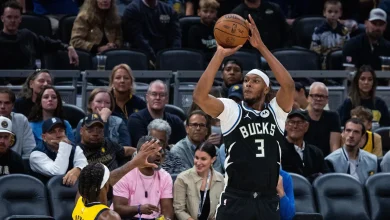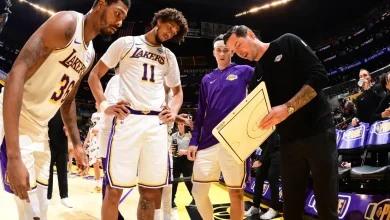Tigers mailbag: Gleyber Torres, free-agent bats and pitching needs

DETROIT — Tuesday afternoon, we will know whether Gleyber Torres accepts the $22.025 million qualifying offer the Detroit Tigers extended to him this offseason. We will also learn which players the Tigers plan to protect on the 40-man roster. (Thayron Liranzo and Hao-Yu Lee are the only sure things, though a few others have compelling cases.)
Then, perhaps, we will slowly move into the real stuff: the moves, decisions and non-decisions that will determine the makeup of the 2026 Tigers.
Even if Tarik Skubal stays put rather than becoming part of a franchise-altering trade, this is a fascinating time in the Tigers’ competitive cycle. The decisions are harder and more complicated than they have been in recent memory.
Let’s take a look at a few reader questions and dissect some of the issues at hand.
Note: Submitted questions may have been lightly edited for length and clarity.
What happens if Torres takes the qualifying offer? Does that take the Tigers out of the Alex Bregman or Bo Bichette sweepstakes? — Jamara H.
Skubal aside, this is the most interesting and important question for Detroit this offseason. The Tigers are coming off a successful year. They ranked 11th in run scoring and did so with a lineup that had the fourth-highest number of plate appearances from hitters age 25 or younger. But late in the season and against elite pitching in the playoffs, their offensive flaws also showed up in a big way.
On the one hand, it would be nice to have a dependable, patient right-handed hitter like Torres returning to the lineup. On the other hand, it makes things complicated if the Tigers want to pursue the bigger-fish hitter they sure could have used down the stretch.
It should not be a question of money. The Tigers could easily afford Bichette, Bregman or whoever else they desire in addition to Torres.
It’s more about fit, which we’ll get to below.
With Max Anderson and Kevin McGonigle on the way, Andy Ibáñez seems like a non-tender candidate. Would McGonigle displace Colt Keith or Zach McKinstry? I see Keith as a promising bat without a defensive position and expendable. — Mike S.
Right now, envision an infield of Torres, Spencer Torkelson, Javier Báez and Colt Keith, plus all the Tigers’ constant moving parts. Not bad. Also, exactly what you had last season.
If Torres accepts the qualifying offer and the Tigers target the likes of Bregman to play third, McGonigle’s path to the Opening Day roster gets messier. Given draft-pick compensation could be at stake, would they be willing to start him in the minors and leave him there for most of the season? And what would all of that mean for Keith?
Maybe there’s a world where the Tigers can carry McGonigle and have him rove around second base, third and short. But if the Tigers were confident in McGonigle’s ability to play shortstop every day, I doubt he would have spent 12 games at third and only six games at short in the Arizona Fall League.
Keith becomes an even more awkward fit if the Tigers pursue another hitter, even though he can play first, second, third and DH. I see why he’s a name people are mentioning as a trade candidate. I also have a hard time seeing the Tigers parting with a young hitter on a team-friendly contract who is still showing signs of improving.
Check out the following metrics where Keith improved from his rookie season to last year:
SeasonEVBarrel %BB %AIR %Pull AIR %
2024
87.8
5.6
6.5
55.9
14.0
2025
90
9.2
10.3
62.0
18.0
No, Keith is not a perfect player. The defense is what it is. He also had only a .403 OPS in 46 plate appearances against left-handed pitching last year. But moving this type of ascending player would be a big departure from the Tigers’ usual ethos.
It’s why I wonder if the Tigers might be best served seeking to improve in center field or shortstop. Do they at all think Bichette (worth minus-12 defensive runs saved last year) can stay at short for another year or two?
I know that doesn’t exactly answer the question, but hopefully it helps clarify all the factors at hand.
Do you think any new acquisitions Scott Harris makes will include low chase and strikeout rates? — Ken W.
They almost have to. At the end-of-season presser, Harris mentioned young players (presumably McGonigle, Max Anderson and Max Clark, among others) who have disciplined profiles and good bat-to-ball skills. But whether any of those players break camp — or even play more than half the season in the big leagues — remains to be seen.
So how else can the Tigers improve their offensive approach? I asked that very question, and Harris pointed again to those young players and talked of existing players working with coaches on their bat path, etc. He did not say anything about changes in personnel.
So it remains fascinating to see just how many offensive acquisitions there will be. Last week at the general managers’ meetings in Las Vegas, Jeff Greenberg said the Tigers are prioritizing pitching but said little about their plans for the position-playing group. Perhaps that’s a reflection of the uncertainty and various scenarios at play. Greenberg told reporters Torres’ QO decision will “affect the rest of the outlook of the offseason.”
Related to the strikeout issue, here are numbers I found interesting and also a little puzzling:
The Tigers ranked 16th in chase rate. Not great but not terrible. They were also 16th in contact rate. They had MLB’s 12th-highest swinging strike percentage and 20th-highest called-strike percentage, and they ranked 14th with an 8.4 percent walk rate.
All those numbers suggest a lineup with an average strikeout profile. Yet the Tigers overall struck out at a 23.9 percent clip, higher than all but three other teams.
Turns out the team was not as bad as it felt in terms of whiff and chase in the big picture. So is it possible this is something the Tigers aren’t going to address with the urgency many might have initially thought?
Is it more important to get a frontline starter or a back-end reliever? We’re obviously trying for both, but where do you think the biggest splash will be made? — Francois C.
Terrific question. Improving a bullpen that ranked 29th in whiff percentage is probably the team’s most glaring need overall. There are a million ways to improve there, adding whiff, velocity and spin. This team would look a lot better with one more proven back-end reliever, though I’d be surprised if the Tigers spend on a big name like Edwin Díaz or Devin Williams.
Now, in terms of overall importance in the long run? They have to hit on at least one big rotation acquisition this winter. We all know the recent track record of misses: Kenta Maeda, Alex Cobb, Charlie Morton and Chris Paddack.
After next season, Skubal, Casey Mize and Jack Flaherty all become free agents. Jackson Jobe will likely still be rounding into form after his Tommy John surgery. The Tigers will feel a lot better this time next year if they already have another higher-end starter under team control. Especially given what feels like a lack of starter depth on the farm, the Tigers can’t afford to miss on another starting pitcher move.
Michael King is the name I’ve heard the most, but other teams like him, too, and it is early in the offseason.
Who are the six, maybe seven pitchers you see getting the majority of the starts next season? — Travis B.
The good news for 2026 is this should be pretty clear — at least until inevitable injuries throw everything off track.
Right now, you have a rotation that would look something like: Skubal, Flaherty, Mize, Reese Olson and Troy Melton.
The Tigers should pursue at least one proven starter to add to that mix — and maybe even be their No. 2. Keider Montero is still very much in this conversation. Troy Watson is knocking on the door, and Andrew Sears might be the next prospect to watch out for.
But last year, the Tigers used 15 starting pitchers (bullpen days included), so it might be the next wave of names that proves to be just as important.





